
Journal of the Belgian Society of Radiology
Scope & Guideline
Advancing Radiological Knowledge for a Global Community
Introduction
Aims and Scopes
- Clinical Radiology and Imaging Techniques:
The journal publishes studies related to the application of various imaging modalities, including MRI, CT, and ultrasound, in diagnosing a wide array of conditions such as cancers, vascular diseases, and other pathologies. - Interventional Radiology:
Research on minimally invasive procedures guided by imaging techniques is a focal area, highlighting advancements in treatment methodologies and patient outcomes. - Pediatric Radiology:
The journal has a consistent emphasis on pediatric cases, addressing the unique challenges and considerations in imaging children. - Emerging Technologies in Radiology:
Innovative technologies, particularly in AI and machine learning applications in imaging, are explored, showcasing the evolving landscape of diagnostic imaging. - Case Reports and Clinical Studies:
The journal regularly features case reports that contribute to understanding rare conditions, diagnostic challenges, and the clinical implications of imaging findings.
Trending and Emerging
- Artificial Intelligence and Machine Learning Applications:
There is a growing trend towards integrating AI and machine learning in imaging analysis, with studies exploring their effectiveness in enhancing diagnostic accuracy and workflow efficiency. - Multimodal Imaging Approaches:
Recent publications showcase a trend towards using multimodal imaging strategies that combine different imaging techniques to provide a comprehensive view of complex medical conditions. - Personalized Medicine and Radiology:
Research focusing on the role of imaging in personalized treatment plans and precision medicine is emerging, indicating a shift towards tailored healthcare solutions. - Radiology in Emergency Medicine:
An increase in studies related to the role of radiology in emergency settings highlights the critical importance of timely imaging in acute care and trauma cases. - In-depth Case Studies:
There is a notable rise in detailed case reports that provide insights into rare conditions or unique presentations, contributing to the knowledge base in specific areas of radiology.
Declining or Waning
- Traditional Radiographic Techniques:
There is a noticeable decline in the publication of studies focused solely on conventional radiography, as more advanced imaging modalities such as CT and MRI are increasingly favored for their superior diagnostic capabilities. - Generalized Pathology Reports:
Research that broadly discusses common pathologies without a specific imaging focus is less frequent. The journal seems to prioritize studies that integrate imaging techniques with clinical outcomes. - Overlapping Imaging Modalities:
Publications that focus on the comparative effectiveness of overlapping imaging modalities (e.g., CT vs. MRI for the same diagnosis) have decreased, possibly as these comparisons become more standardized in clinical practice.
Similar Journals

SEMINARS IN ROENTGENOLOGY
Cultivating Expertise in Diagnostic Imaging TechniquesSEMINARS IN ROENTGENOLOGY is a revered journal dedicated to the dynamic fields of Radiology, Nuclear Medicine, and Imaging, published by W B SAUNDERS CO-ELSEVIER INC. With a legacy spanning from 1966 to 2024, this journal provides a platform for comprehensive review articles that foster scholarly discussion and advancement in diagnostic imaging techniques and methodologies. Although currently not an open access publication, SEMINARS IN ROENTGENOLOGY holds significant relevance within its field, reflected by its inclusion in the Q4 category in the latest 2023 Journal Rankings and its position in the 20th percentile among its peers. This journal appeals widely to researchers, professionals, and students aiming to enhance their knowledge and contribute to the evolving landscape of radiologic science. Notable for its informative content and expert insights, SEMINARS IN ROENTGENOLOGY continues to serve as an essential resource for those committed to advancing clinical practice and research in radiology.

BRITISH JOURNAL OF RADIOLOGY
Leading the Way in Radiological Science and PracticeBritish Journal of Radiology is a leading peer-reviewed journal published by the British Institute of Radiology, dedicated to advancing the field of radiology, nuclear medicine, and imaging. With a prestigious history dating back to 1945, this journal is at the forefront of disseminating cutting-edge research and innovations that significantly impact clinical practice. Currently enjoying a Q1 ranking in the field of radiology and Q2 in general medicine for 2023, it is recognized for its rigorous standards and high-quality content, ranking #87 out of 333 in Scopus for specialties related to Medicine, Radiology, Nuclear Medicine, and Imaging, placing it in the 74th percentile. Researchers, professionals, and students are encouraged to engage with the latest findings and comprehensive reviews presented within its pages, which contribute not only to academic discourse but also to the evolution of practice in the wider medical community.

EUROPEAN JOURNAL OF RADIOLOGY
Pioneering Insights for Radiology ProfessionalsThe European Journal of Radiology, published by Elsevier Ireland Ltd, is a premier peer-reviewed journal in the fields of radiology, nuclear medicine, and imaging. Established in 1981, it has carved a significant niche within the academic community, showcasing innovative research that enhances medical imaging practices and improves patient care. With an impressive ranking in the Q1 category for both Medicine (miscellaneous) and Radiology, Nuclear Medicine, and Imaging in 2023, the journal is recognized globally for its commitment to advancing scientific knowledge and improving imaging methodologies. The journal's Scopus ranking of #60/333, placing it in the 82nd percentile, underlines its reputation for high-quality research and scholarly contributions. While traditionally a subscription-based journal, it continually evolves to meet the demands of the academic landscape, aiming to bridge the gap between research and clinical practice. Researchers, healthcare professionals, and students alike can benefit from exploring its extensive archives and current publications, which are curated to foster education and innovation in the medical imaging domain.
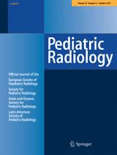
PEDIATRIC RADIOLOGY
Leading the way in pediatric imaging advancements.Pediatric Radiology is a leading journal published by Springer that provides a crucial platform for the dissemination of research in the fields of pediatrics, perinatology, and radiology. Since its inception in 1973, the journal has continually contributed to the advancement of medical imaging techniques and their application in diagnosing and treating pediatric conditions. With its impact factor reflecting a Q2 ranking in both Pediatrics and Radiology categories as of 2023, Pediatric Radiology is highly regarded in scholarly circles, aiding researchers, clinicians, and students to stay at the forefront of innovations and findings in the field. Although the journal does not offer open access, it continues to be an essential resource for evidence-based information that enhances clinical practice and improves health outcomes for children globally. The journal's reach is further established through its solid Scopus rankings, indicating its relevance and influence in the global medical community.
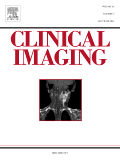
Clinical Imaging
Shaping Tomorrow's Imaging Techniques TodayClinical Imaging, published by Elsevier Science Inc, is a renowned journal dedicated to the field of radiology, nuclear medicine, and imaging. With an ISSN of 0899-7071 and an E-ISSN of 1873-4499, this esteemed publication has established its significance in advancing imaging science since its inception in 1989 and continues to make impactful contributions to the discipline through 2024. The journal holds a prestigious Q2 ranking in the category of Radiology, Nuclear Medicine, and Imaging, reflecting its critical role in bridging research and clinical practice. Currently ranked #113 out of 333 by Scopus, with a notable 66th percentile, it offers a platform for disseminating high-quality research, reviews, and case studies that inspire innovation and enhance imaging techniques. Although it primarily functions as a subscription-based journal, it remains dedicated to accessibility and the dissemination of pivotal findings that inform both academia and clinical settings. Clinical Imaging is essential for researchers, professionals, and students alike, offering insights that shape the future of diagnostic imaging.

SA Journal of Radiology
Elevating Standards: Your Source for Cutting-Edge Radiology ResearchThe SA Journal of Radiology is a prominent open-access journal published by AOSIS, dedicated to advancing knowledge in the fields of Radiology and Ultrasound Technology. Established in 2004, this South African journal provides a platform for researchers, professionals, and students to disseminate valuable findings and share innovative practices in medical imaging. With an ISSN of 1027-202X and an E-ISSN of 2078-6778, the journal has become an important resource for those involved in radiological sciences, despite currently holding a Q4 ranking in both Radiological and Ultrasound Technology and Radiology, Nuclear Medicine and Imaging categories. Covering a converged time span from 2014 to 2024, the journal aims to promote scholarly communication and enhance the accessibility of research, positioning itself as a key player in the global radiological community. In a landscape where open access is increasingly critical, the SA Journal of Radiology is committed to fostering research collaboration and facilitating the exchange of ideas among clinicians and academics alike.
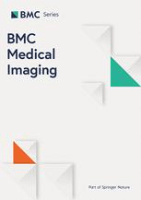
BMC MEDICAL IMAGING
Elevating Standards in Diagnostic Imaging Through Open Knowledge.BMC Medical Imaging is a premier open-access journal dedicated to advancing the field of radiology, nuclear medicine, and imaging technologies. Published by BMC in the United Kingdom, this journal serves as a vital resource for researchers, clinicians, and students, fostering a collaborative environment for sharing innovative findings and methodologies in medical imaging. With a commendable impact factor and an impressive Scopus ranking within the top 35% of its category, BMC Medical Imaging provides a platform for high-quality research to be disseminated widely and freely since its inception in 2001. The journal aims to cover a diverse array of topics, from advanced imaging techniques to their clinical applications, enhancing the understanding and effectiveness of diagnostic practices. By contributing to the body of knowledge and facilitating open access to research, BMC Medical Imaging plays a pivotal role in shaping the future of medical imaging and improving patient care.

Iranian Journal of Radiology
Pioneering Knowledge in the Evolving Field of RadiologyWelcome to the Iranian Journal of Radiology, a pivotal platform dedicated to advancing the field of radiology, nuclear medicine, and medical imaging. Published by BRIEFLAND, this journal aims to disseminate high-quality original research, reviews, and clinical studies that contribute substantially to the global scientific community. Established in 2008 and spanning until 2024, the journal provides an essential archive of knowledge in a rapidly evolving discipline. Although it currently holds a Q4 quartile ranking in the 2023 Scopus metrics, it serves as an important resource for both emerging and established researchers looking to submit their work. Located in the Netherlands, the journal is committed to open dialogue and collaboration amongst professionals in the field, reflecting its accessibility and relevance to both practitioners and academics. With its continued growth and commitment to quality, the Iranian Journal of Radiology is poised to enhance understanding and innovation in diagnostic imaging.
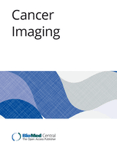
CANCER IMAGING
Illuminating Innovations in Oncology ImagingCANCER IMAGING, published by BMC, stands as a leading open-access journal in the realms of oncology and medical imaging, significantly contributing to the advancement of cancer research since its inception in 2000. With an impressive impact across multiple domains—most notably ranking Q1 in prestigious categories such as Medicine (miscellaneous), Oncology, and Radiology—this journal ensures high visibility and influence within the academic community. As of 2023, it is recognized in various Scopus rankings, securing top positions in the fields of Radiology, Nuclear Medicine, and Imaging, alongside Radiological and Ultrasound Technology. The journal's commitment to open-access publication, adopted in 2014, enhances accessibility for researchers, healthcare professionals, and students alike, fostering an inclusive environment for sharing critical advancements and innovative methodologies in cancer imaging. Set in the vibrant landscape of the United Kingdom, CANCER IMAGING continues to play a vital role in elucidating the complexities of cancer diagnostics and treatment, establishing itself as an essential resource for those pursuing excellence in cancer care and research.
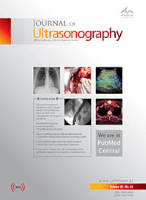
Journal of Ultrasonography
Fostering Collaboration in the Ultrasound CommunityJournal of Ultrasonography, published by SCIENDO, is a vital open-access platform for advancing knowledge and research in the fields of Radiology and Ultrasound Technology. Since its inception in 2013, this journal has provided a forum for practitioners and researchers to share innovative findings and critical insights, making it an essential resource for professionals in the medical imaging community. With an ISSN of 2084-8404 and an E-ISSN of 2451-070X, the journal aims to enhance clinical practice and foster academic growth through rigorous peer-reviewed publications. Notably, it has achieved a Q3 ranking in both Radiological and Ultrasound Technology and Radiology, Nuclear Medicine and Imaging, reflecting its commitment to quality and relevance. Based in Germany, it has also emerged as a significant contributor to the global discourse in medicine, currently ranked in the 39th percentile within its niche disciplines according to Scopus. The journal is uniquely positioned to serve as a conduit for innovative research, making it indispensable for researchers, healthcare practitioners, and students dedicated to the advancement of ultrasonography.